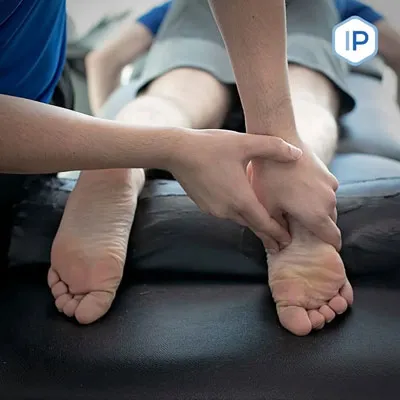Sciatica is a painful condition that can affect your ability to perform daily
tasks and enjoy life to the fullest.
It occurs when the sciatic nerve, which runs from your lower back
through your hips and down each leg, becomes compressed or irritated.
Understanding Sciatica
Sciatica is characterised by pain that radiates along the path of the sciatic
nerve, typically affecting one side of your body. It is commonly caused by
conditions such as a herniated disk, bone spur, or spinal stenosis
(narrowing of the spine) that compresses the nerve. These issues can arise
from a variety of factors, including injury, aging, or repetitive stress.
Symptoms of Sciatica
If you’re experiencing sciatica, you might notice the following symptoms:
Radiating Pain: Pain that travels from your lower back through your
buttock and down the back of your leg.
Discomfort Along the Nerve Pathway: Pain or discomfort that can
occur anywhere along the sciatic nerve.
Numbness or Tingling: A sensation of numbness or tingling in the
affected leg or foot.
Varying Intensity: The pain can range from a mild ache to a sharp,
burning sensation or even excruciating discomfort.
At Indergaard Physiotherapy, we offer a comprehensive approach to
treating sciatica that focuses on relieving pain, improving mobility, and
preventing future episodes.
Our treatment plans may include:
Specific Exercises: Customised exercises designed to relieve pressure
on the sciatic nerve and strengthen the muscles supporting your
spine.
Manual Therapy: Hands-on techniques to improve joint function,
reduce muscle tension, and alleviate nerve compression.
Shockwave Therapy: In some cases, advanced treatments like
Shockwave Therapy can be used to accelerate healing and reduce
pain.
Preventing and managing sciatica involves a combination of lifestyle
adjustments and targeted exercises.
Here are some tips to help you stay pain-free:
Maintain Good Posture: Ensure you maintain proper posture while
sitting, standing, and lifting to reduce pressure on your lower back.
Regular Exercise: Engage in exercises that strengthen your core
muscles, which support your spine and help prevent nerve
compression.
Ergonomic Adjustments: Make sure your workspace is set up to
support a healthy posture, especially if you sit for long periods.
Stay Active: Regular physical activity can help keep your muscles
strong and flexible, reducing the risk of sciatica.
When to Seek Professional Help
If you’re experiencing persistent pain radiating down your leg, numbness, or
tingling, or if your symptoms are affecting your daily activities, it’s important
to seek professional advice.
At Indergaard Physiotherapy, our team is dedicated to assessing your
condition and creating a tailored treatment plan to alleviate your sciatica
symptoms and improve your quality of life.
Sciatica can be a debilitating condition, but with the right treatment and
preventive measures, you can manage your symptoms and improve your
overall well-being.
If you’re struggling with sciatica, don’t wait for the pain to worsen.
Contact Indergaard Physiotherapy today to schedule a consultation and
take the first step towards a pain-free life.


